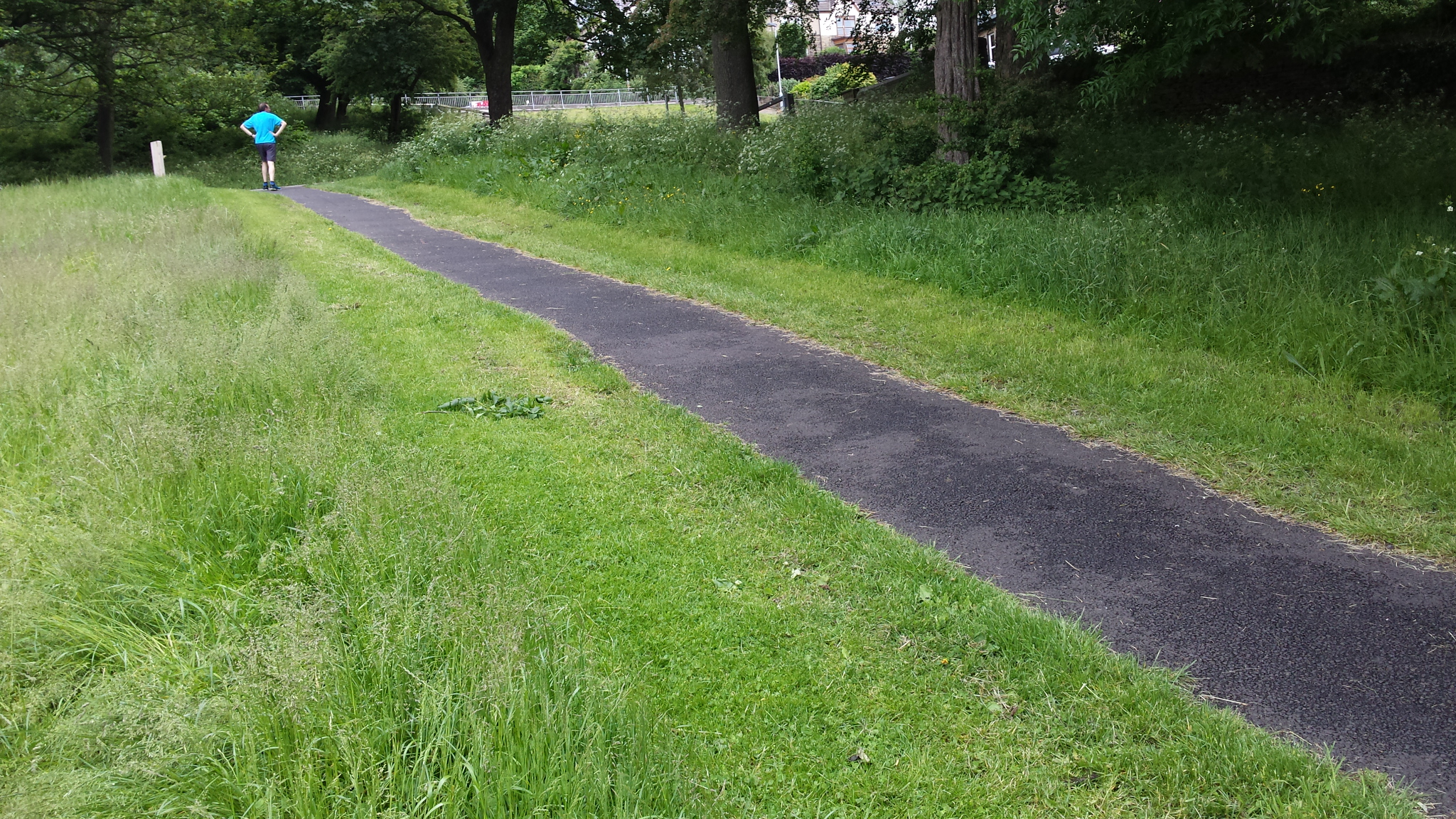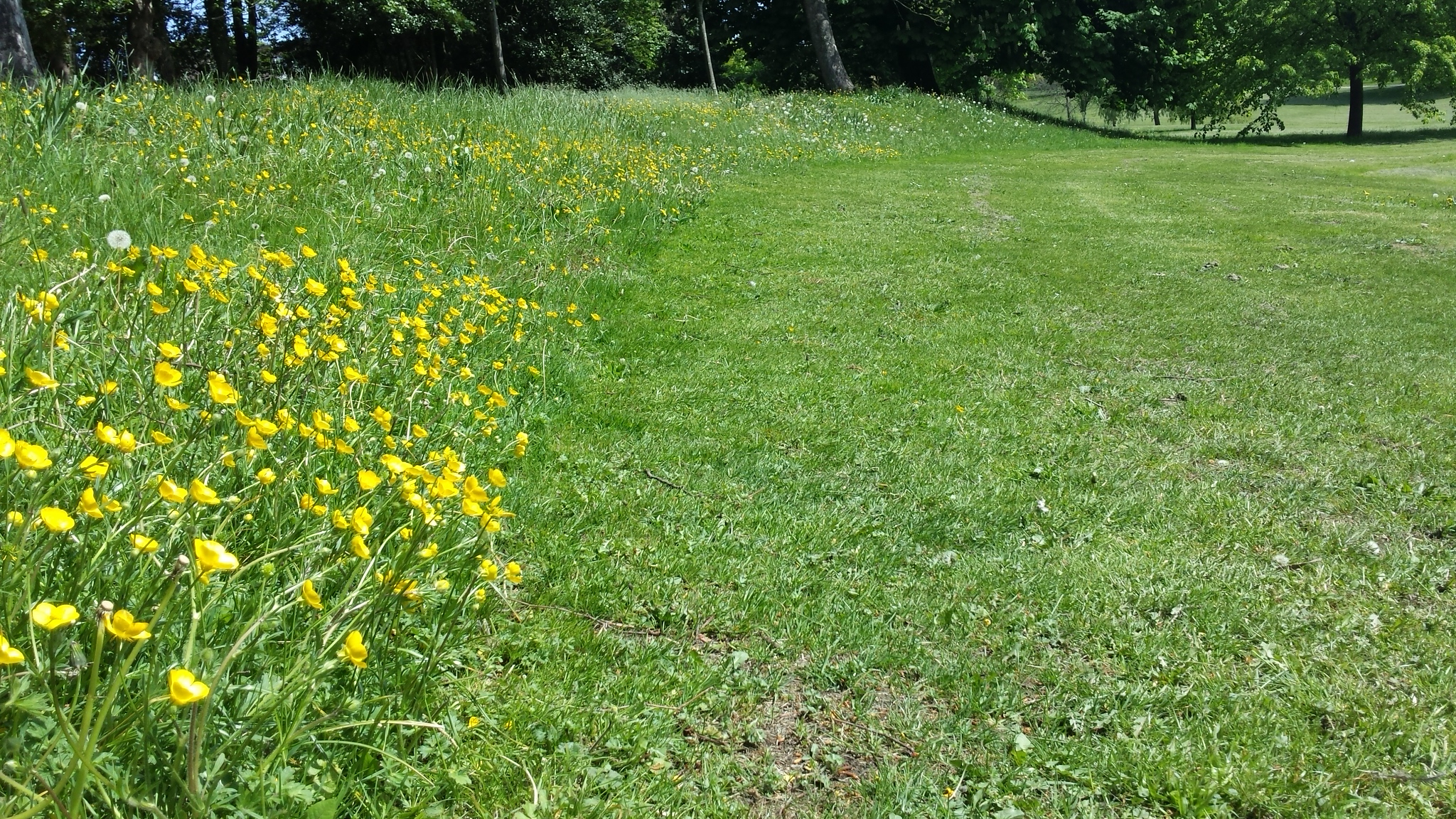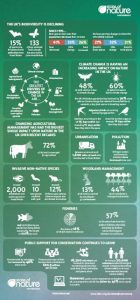
Alongside our aim to make parks welcoming and accessible to people we are looking at how to make more space for nature in Bradford parks and green spaces. It is hoped that we can help reverse biodiversity loss and respond to climate breakdown. The 2019 State of Nature report painted a grim picture of the damage being caused to insects, mammals, birds, amphibians and wild flowers. Nature provides Human society with clean air, food, water, materials and a habitable planet: we cannot exist if the natural world is not in rude health and thriving.
Too Much Pressure
The State of Nature report identifies the human pressures that are driving many species towards extinction in the UK: climate breakdown, urbanisation, pollution, invasive species, poor agricultural practice, freshwater and woodland management. It will take the whole of society to address the root causes but we can make a start locally and change how we manage parks to create a network of spaces for nature in our towns and cities. The infographic summarises the findings for England (click on image to open link)
First Principles
We are adopting a set of Nature Friendly Park principles to guide our work:
- First Do No Harm – identify and reduce harmful practices.
- Look and Learn – how does nature respond.
- Collaborate – work with park users and communities to find solutions for people and nature.
- Work with Nature – lead with natural regeneration.
Early days
The actions set out below provided a starting point at Peel Park for discussions with the Friends and other park users on how we might respond. Some are more contentious than others and some easier to achieve. We also recognise there is an important balance to be struck between the traditional, formal “manicured” look valued by many park visitors and more informal natural appearance.
Chemicals: reduce the use of herbicides including glyphosate to a minimum. End the practice of spraying around the base of park trees. Test non-chemical and mechanical methods of vegetation control to replace chemical sprays around furniture etc. where possible.
Grass Cutting: relax the mowing regime to provide a range of grass land habitats from short to long. Paths and edges mowed short, neat and tidy. Some open areas managed as hay meadow to provide habitat, species variety, seeds for birds and small mammals. Reduce grass cutting under tree canopies.

Borders: introduce wildflower areas to increase diversity, more use of herbaceous and perennial planting.

Shrubs and ground cover: mix of ornamental and native shrubs and ground cover to provide food and habitat for birds and small mammals.
Ponds and Wetlands: improve the quality of existing ponds and create new small ponds and wet habitat particularly for amphibians if possible.
Trees: increase the number and variety, including fruit trees, retain deadwood and older trees to support insect, bird and bat populations. Look at leaving more leaves in less formal areas for habitat and soil improvement.

Litter: encourage people to be responsible for litter, take it home or use the bins.
Plastic Free: change our operations and work with cafes and concessions to replace single use plastics with renewable materials in parks.
Zero Carbon: look at how we might make the transition from diesel and petrol powered horticultural equipment to renewable zero carbon alternatives.
2020 and beyond
During 2020 Nature Friendly Parks trials will continue in Peel Park and hopefully be tested in others areas. Horton Park will become the focus of a European Commission funded Life Programme : a detailed 5 year action study that will build on these principles and examine how communities can be effective at increasing biodiversity and adapting to climate breakdown in a local park and urban green space setting.
If you would like to help and become involved contact your local Friends group or email [email protected]


